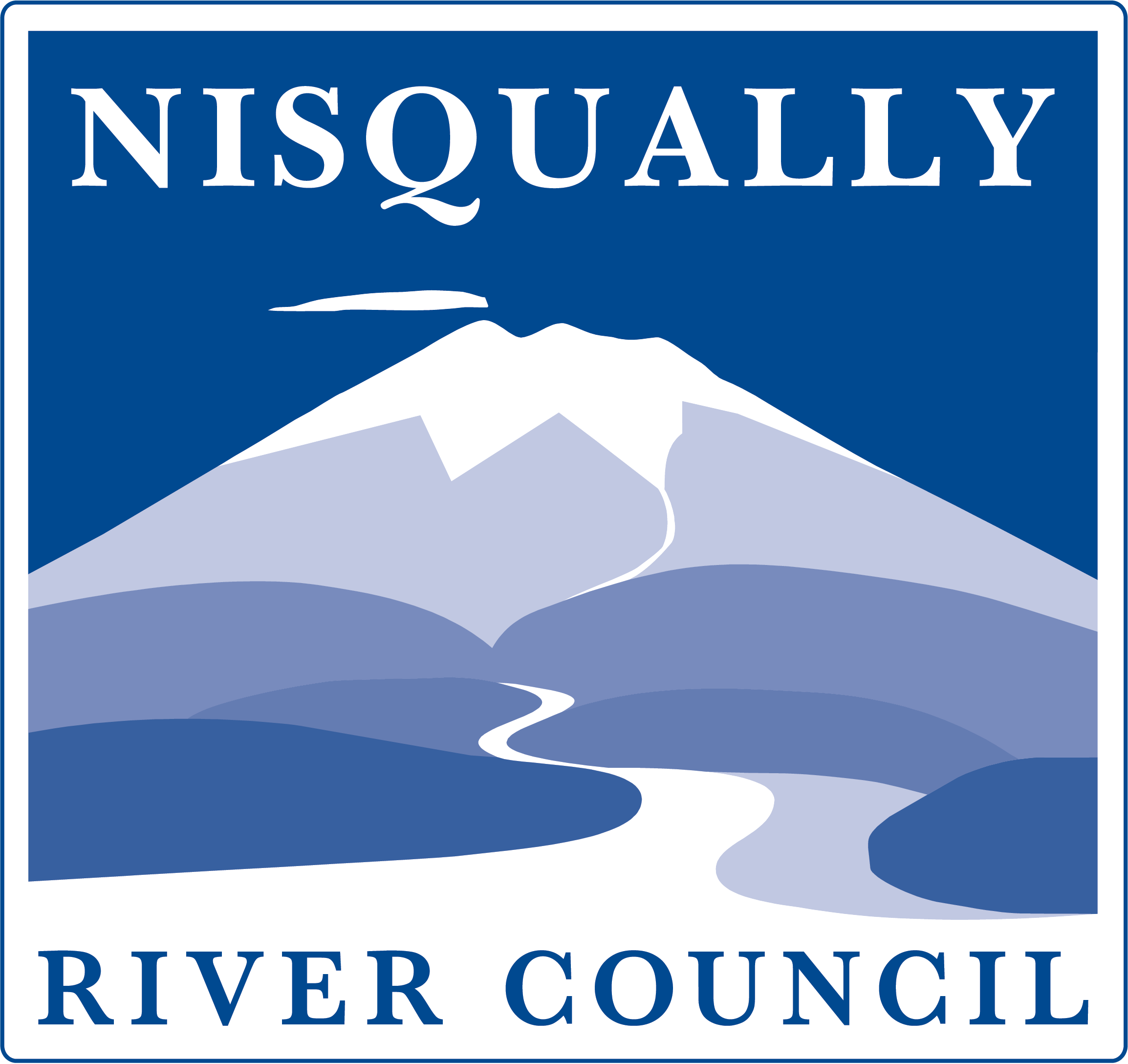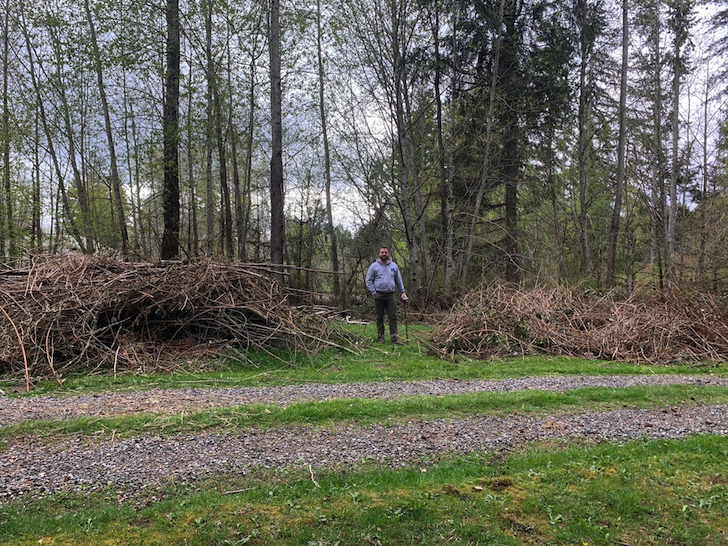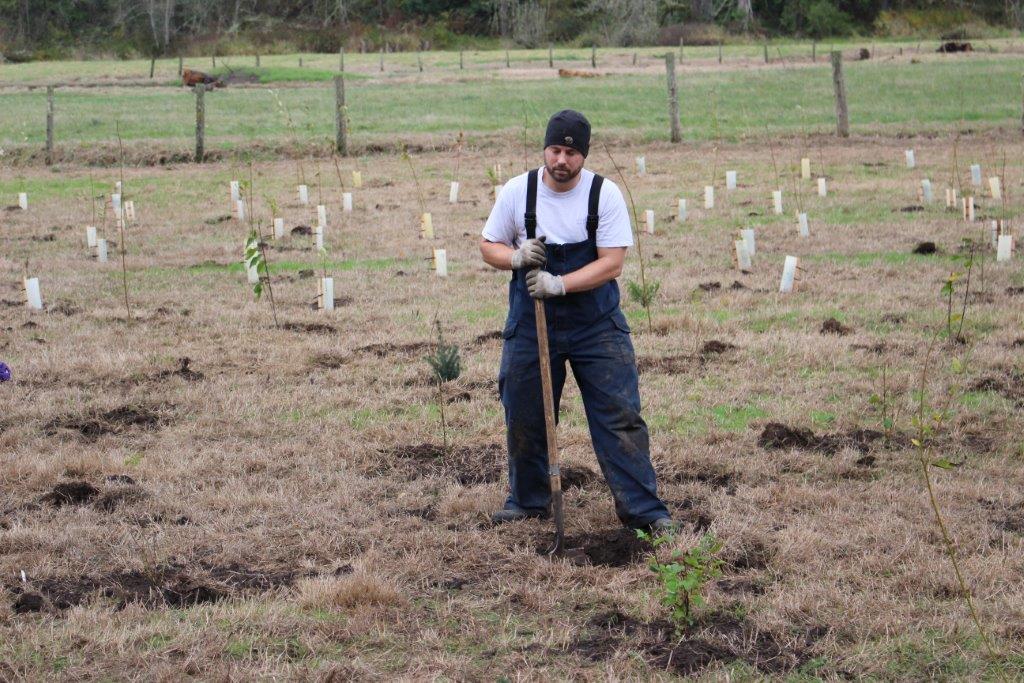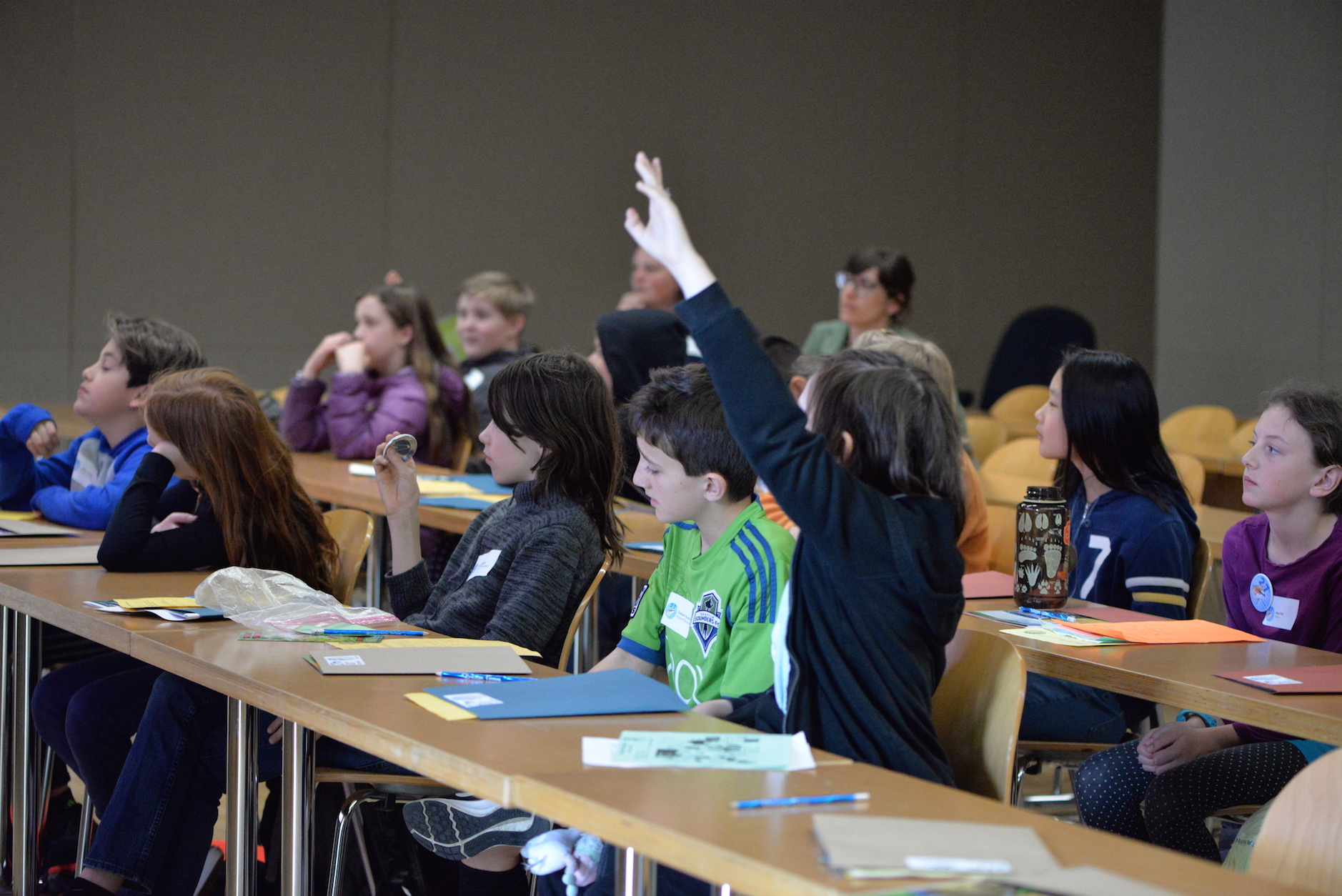The greatest success of the Nisqually River Council has been that it is a forum where citizens and representatives from government agencies can meet together and learn from each other.
The original Nisqually River Management Plan (NRMP) of 1987 called for 160 specific actions. Of these 44 have no measurable criteria (i.e. they encourage an action). Of the remaining 116, 70 (just over 60%) were completed by 2003. Of the 46 that were still uncompleted at that time, a significant portion are either still in progress or are no longer a priority given the changes in the physical and political landscapes since the plan was adopted. The current Nisqually Watershed Stewardship Plan is organized in a different way than the NRMP was with long term targets so it is not as easy to due an action analysis.
Some specific successes of the NRC include:
The NRC has placed an emphasis on education and through this effort they prepared the Nisqually Education and Interpretation Study; funded and promoted the Nisqually River Education Project (NREP); previously published the Nisqually River Notes newsletter and numerous newspaper columns, and now communicate through this blog and through the Yil-Me-Hu newsletter; prepared the Nisqually River Basin Map for schools and other interested organizations; developed the first edition of the Nisqually Basin Atlas; developed the Basin Watch brochure; and produced the Nisqually Destiny video.
The NRC has also funded the annual Nisqually Watershed Festival since 1990 and for the last three years has added the Eatonville Salmon Festival. The NRC helped fund the Eatonville and Yelm Historic District Master Plans, the Pioneer Farm Master Plan, and the Upper Nisqually Community Report survey of upper basin residents.
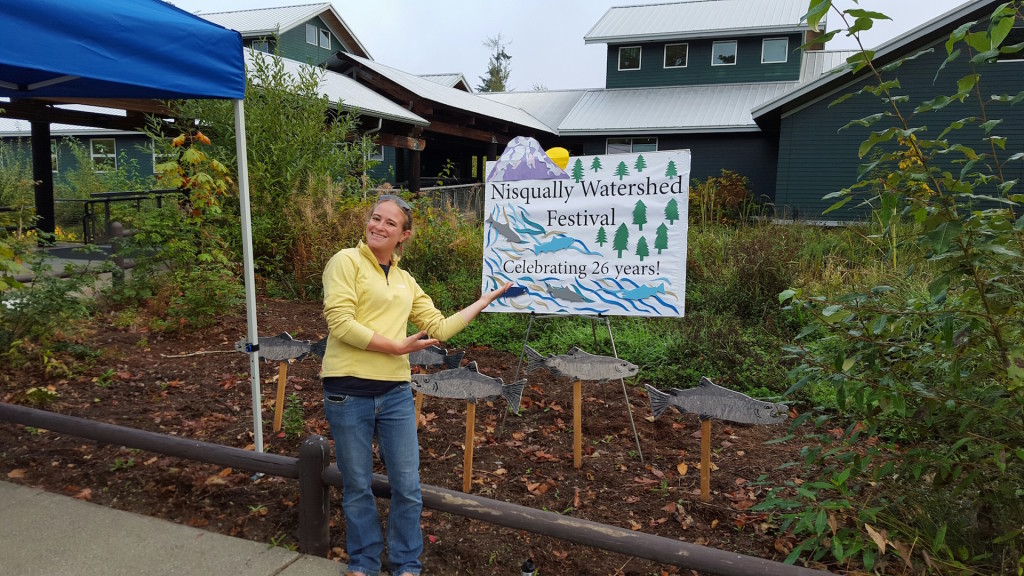
Facilitating public access to the River has always been important to the NRC and they have prepared the Nisqually River Public Access Study, facilitated siting and acquisitions for both the Nisqually State Park and McKenna Park, and have promoted improved public access during hydropower licensing. Currently the NRC is working on the Nisqually River Trail to continue to improve access to the river.
As a part of implementing the plan the NRC has developed basin boundary signs for federal, state and county roadways, and funded startup of the Nisqually Land Trust.
The original Nisqually River Task Force served as model for the development of the Timber-Fish-Wildlife agreement covering commercial timberlands. TFW is a voluntary process whereby timber owners work with resource agencies, tribes and other interests to thoroughly characterize and manage fish and wildlife habitat and other environmentally sensitive areas in exchange for regulatory predictability and expedited permitting.
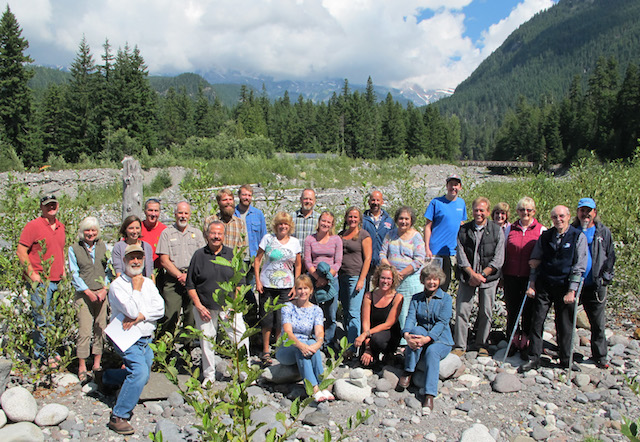 The Council has led coordination with partners on the first Chinook and Steelhead recovery plans, the 2514 water quantity and quality plans, and the Nisqually Climate Adaptation Plan. It has also spearheaded ecosystem services work and ecosystem credit trading.
The Council has led coordination with partners on the first Chinook and Steelhead recovery plans, the 2514 water quantity and quality plans, and the Nisqually Climate Adaptation Plan. It has also spearheaded ecosystem services work and ecosystem credit trading.
Lessons Learned:
Being non-regulatory and inclusive has been key to ensuring meaningful involvement by private citizens who are often frustrated by, and sometimes distrustful of government agencies. Consistent staffing by individuals dedicated to the management structure has provided continuity and allowed the program to remain focused in its work. The modest amount of project funds provided in the Program’s budget has been very effective in leveraging larger amounts of funding. With a comprehensive management plan in place, and a positive track record of coordination, Program participants have been very successful in securing implementation grants.
The strong link between the Advisory Committee and the Council (three citizens serve as full members of the Council) has allowed local concerns to be heard and addressed in a timely manner. With review and recommendation procedures at the subcommittee level, a coordinated and informed response can be provided well before any developed by an individual agencies.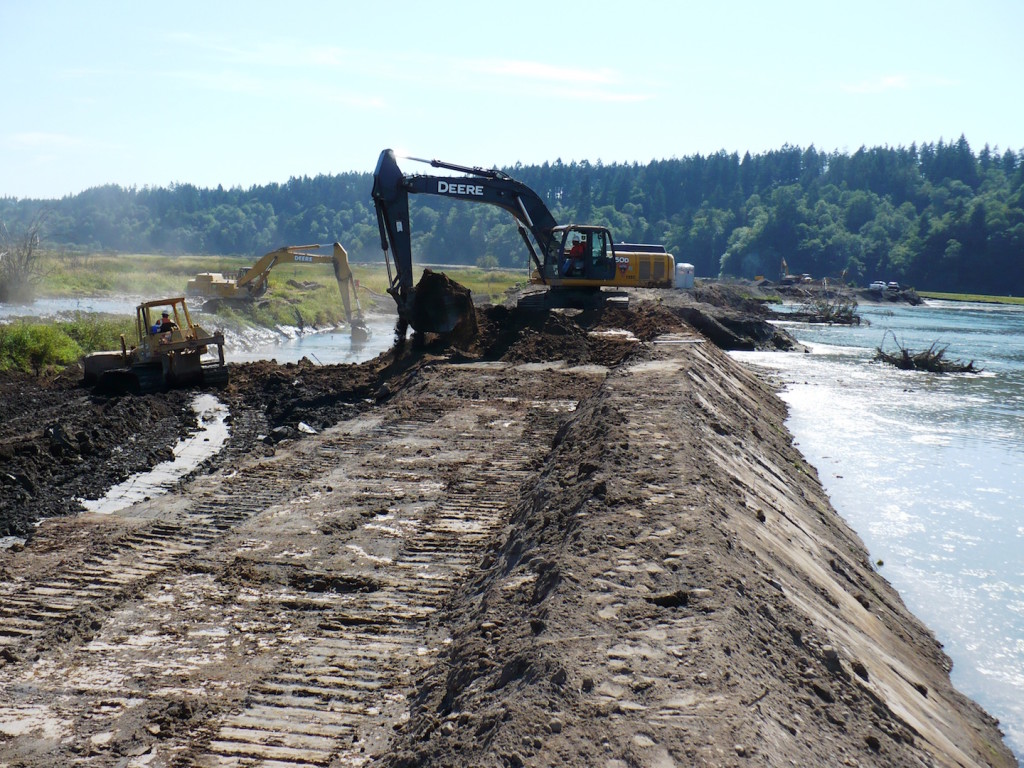
Circling back to the greatest success of the Council is in being a forum for agency representatives and citizens to work together, former Nisqually National Wildlife Refuge Manager, Jean Takekawa, stated that without the Nisqually River Council, the restoration at the Refuge would not have happened.
Next time: The development of the Nisqually Watershed Stewardship Plan.
